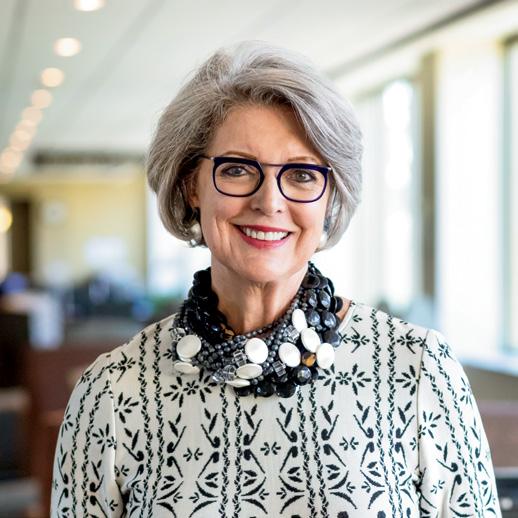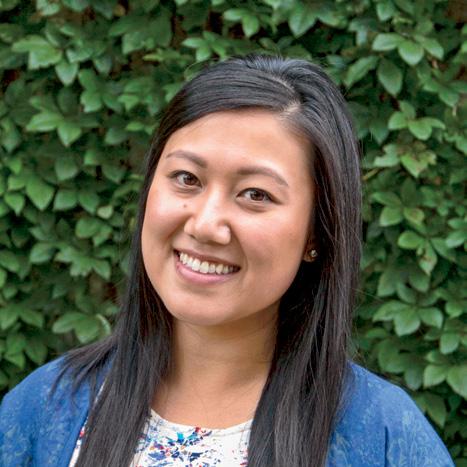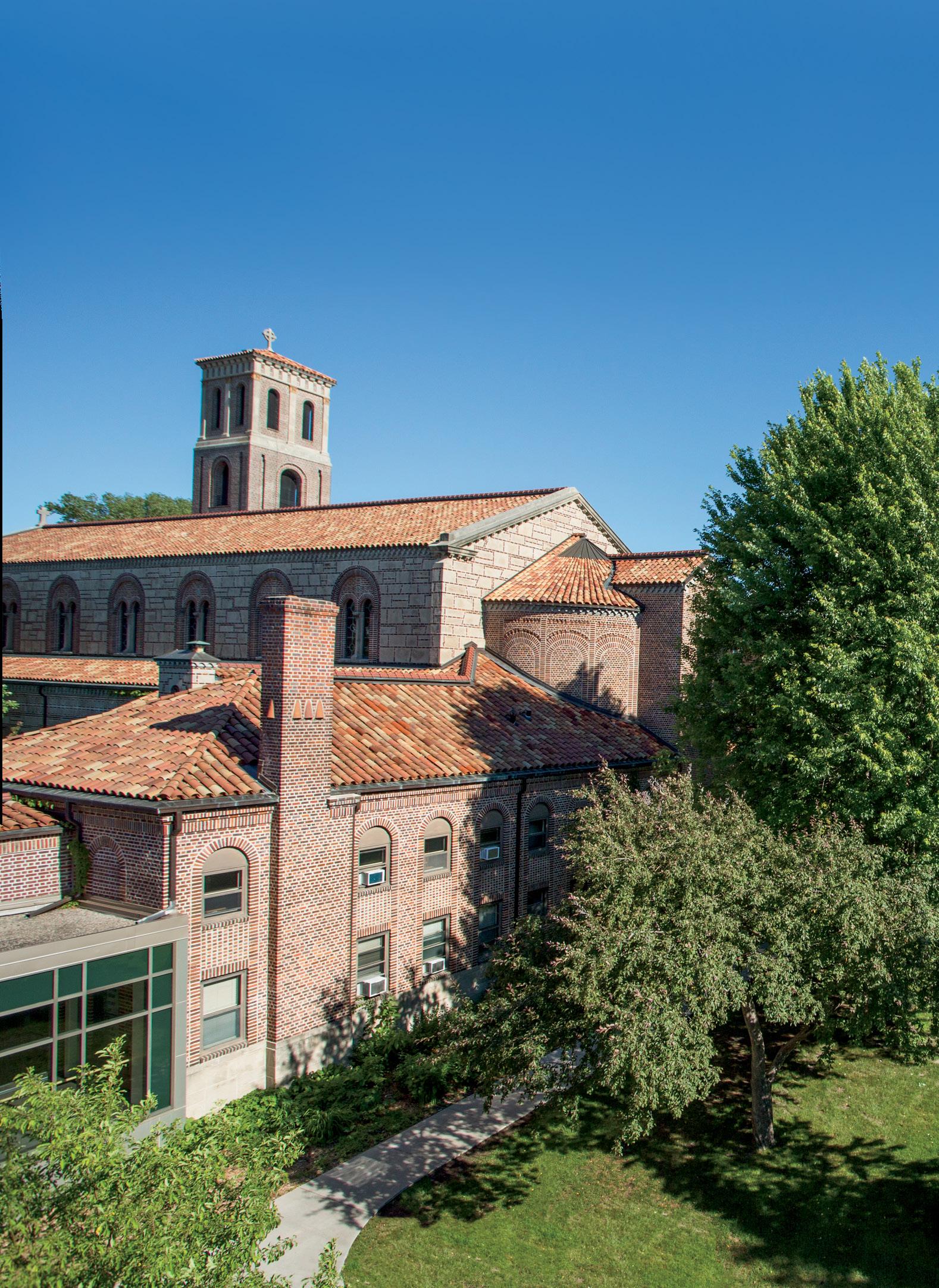
10 minute read
Learning Moves Online with Focus on Innovation and Equity
At the pandemic’s onset, swift action and dedicated efforts by administrators, faculty, and staff created a thriving virtual-learning environment.
By Lindsey Frey Palmquist
Natalie Grose ’20 (below) first learned the serious impact COVID-19 would have on her senior year while she was standing on the deck of a sailboat in Mexico. She had left St. Kate’s early for spring break to crew the boat, intending to be back in time for classes to resume on March 30.
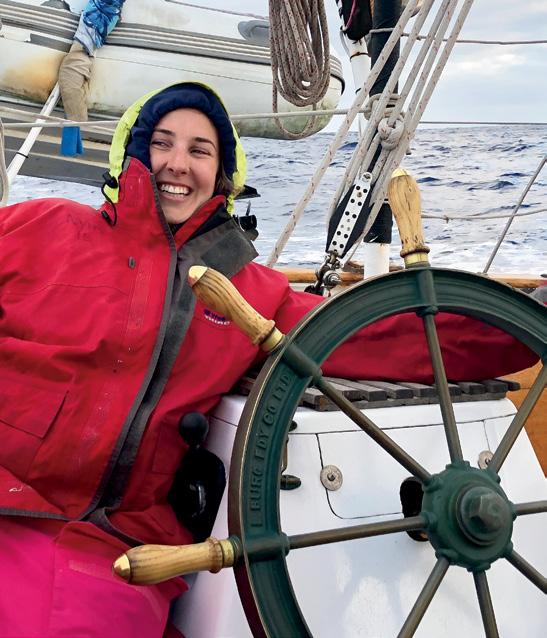
Natalie Grose ’20
Image provided by Natalie Grose.
“I traveled to Mexico when everything still seemed normal,” says Grose. “But within a few days of my arrival, our replacement crew members were no longer allowed to travel there. I wanted to help the group get home safely with a proper crew, so rather than navigate the airport closings, I decided to sail back to California with them.”
On April 6, Grose docked in Sausalito, Calif., returning to a world that had seemingly upended while she was out on the ocean.
“I came back and everything was different. I was in shock,” says Grose. “I had to do a two-week quarantine at home, everything was shut down, and my graduation ceremony was postponed.”
BEHIND THE SCENES
While Grose was at sea, St. Catherine University administrators were hard at work. Within those two weeks, they launched new safety protocols, technology investments, and virtual-learning innovations to support students, faculty, and staff with St. Kate’s mission at the helm.
“Our immediate concern was the safety of our students, faculty, and staff,” says Anita Thomas, PhD, executive vice president and provost of St. Kate’s. “Bringing our students home safely from Global Studies programs was our first action. We also canceled any additional travel-abroad programs that were scheduled for spring break.”
St. Kate’s simultaneously closed early for spring break on March 16. This action provided two weeks for the University to limit the on-campus population, reduce instances of social contact, and plan and prepare for moving all learning and campus resources fully online as details about the extent of COVID-19 pandemic became known.
University President ReBecca Koenig Roloff ’76 created an incident management team.. composed of leadership in academics, . student support, operations, human resources, communications, and the senior leadership team. Amy Kelly, MD, director of St. Kate’s Health and Wellness Clinic, coleads the University’s COVID-19 response efforts, in coordination with the Minnesota Department of Health. Also on the team are Lisa Dutton, PhD, PT, professor of physical therapy and dean of health sciences, and Laura Fero, PhD, MSN, RN, dean of nursing.
“Both Lisa and I had a number of students with enormous clinical ramifications due to the pandemic,” says Fero. “We were on the team to provide a voice for our students and make sure we got processes in place to secure their experiences so they could continue their education.”
Students in nursing rotations and those gaining clinical experience were recalled from their positions in the field, and St. Kate’s clinical partners began shutting down access to hospitals, clinics, and acute care or long-term care facilities to help limit the virus’ spread.
“After ensuring the safety of our students, our next concern was maintaining academic excellence,” says Thomas. “Everything was a collaborative decision, and we began by setting 16 metrics for online instruction that were required to maintain academic excellence and rigor online, and we communicated those to faculty and staff.”
According to Thomas, the group then focused on two core issues: technology adoption and equitable access. Existing emergency-closing protocols had prepared St. Kate’s administrators to broaden e-learning support and build out the platform. Faculty already had prepared some online course material in case winter blizzards caused emergency school closings.
“When we got the news we were shifting fully online, we felt fairly good about the transition, knowing we’d amassed a robust toolbox of online resources for our existing digital courses,” says Nancy Hendrickson, director of Academic Technology. “We just needed to help more faculty and staff become aware of and comfortable with using them.” Academic Technology began hosting between five and seven training sessions each day over spring break. During the sessions, faculty learned the online tools available to them, including video conferencing, lecturing and presentation tools, class discussion platforms, online testing, security measures, and more. Hendrickson’s team then led practice sessions to help faculty become comfortable teaching with the tools.
On March 30, the first day coursework resumed after the extended spring break, more than 2,000 courses were being taught online and videoconferencing had increased by 1,317 percent.
“The situation with COVID-19 has helped a lot of faculty and staff overcome their fears about moving to virtual-learning formats and the impact on students,” says Jean Guezmir, St. Kate’s chief information officer and vice president. “They were put in this position without a choice, but I’m incredibly appreciative of our entire faculty and staff. I know they feel a real sense of accomplishment for devoting extra hours and energy into making this a successful transition.”
FINDING CREATIVE SOLUTIONS
Faculty not only embraced virtual tools, but they found innovative ways to move physical aspects of their coursework online.
Prelicensure students in nursing, whose accreditations allowed up to 50 percent of clinical hours to be done virtually, were able to use telehealth and patient simulations. Using a program called Shadow Health, students entered the environment as avatars and made clinical decisions in real time about virtual patients, such as determining the priorities of the patient’s assessment, debriefing with faculty on clinical decision-making, and receiving real-time feedback.
Monica Rudquist, assistant professor of art and art history, encouraged students in her pottery class to use clay-like materials at home to create their work, such as dough, cardboard, foil, and even licorice sticks. Students shared online videos to document, submit, and critique one another’s work and received ongoing feedback from Rudquist.
Thomas was amazed at the ingenuity. “I’m really proud that the faculty went above and beyond to make this as rich and as rigorous of an experience as they have, but also something that feels really comfortable,” she says. “I think the students appreciated the hard work, and both groups really bonded and engaged. They were incredibly interactive in this process.”
REMAINING CHALLENGES
The nursing and health science programs had additional complications to navigate. “Unfortunately, virtual solutions do not exist for program accreditations that required hours of face-to-face patient interaction in the clinical environment,” says Fero.
Thanks to generous donations from Mary Dee Hacker ’74, Susan Morrison ’60, Patty Connelly ’65, Jane Persoon ’72, and Mary Shearen ’75, some nursing students were able to supplement their clinical work with the help of virtual simulation technology. The ability to continue fulfilling their clinical requirement while social distancing allowed these students to graduate on time and enter the healthcare workforce at a much-needed time.
On the other hand, students training to be physical, occupational, or respiratory therapists, nurse practitioners, and other healthcare providers, had to receive an incomplete status at the end of the semester. Some students also had to delay graduation until St. Kate’s clinical partners reopen and safely accept students again.
“We’re working really hard with our partners to safely get students back into the clinics to complete their programs,” says Dutton. “We want to keep the students safe, and we are considering not just their health, but the health of the community and that of our healthcare system as well.”
Some students were able to finish their programs but still need certification tests or license exams to be qualified for work, and those testing centers are closed. Other students in graduate programs or completion work are already working on the front lines in the healthcare field while trying to finish advanced degrees.
“To go to school on top of working full time caring for COVID-19 patients was an added layer of pressure and anxiety for them,” says Fero. “We provided flexibility and support services to help them cope while still holding the standards of the program. But we’re looking at a future where they will have powerful voices in moving public health forward. We know now is the time for them to work, understand social justice and health disparities, and then find their places in leadership.”
MAINTAINING VALUES OF DIVERSITY AND EQUITY
While the innovative use and adoption of virtual learning has succeeded, technology at St. Kate’s means far more than hardware and software. Virtual learning must also align with the University’s mission to provide equitable student and faculty experiences.
“On campus, we work to equalize students,” says Guezmir. “They all have access to the same software, the same connectivity. When we went to online learning, their home computers didn’t have enough power, their internet was slower. These things start to create disparity. A big challenge of ours was working to make it as equal as possible.”
The University worked carefully on logistics to give students and faculty what they needed to be successful. By strategically upgrading computers on campus, Guezmir’s team freed up more than 100 of the previous models for distribution. Cascading the equipment allowed St. Kate’s to manage the budget, advance technology around campus, and provide faculty and students with better or faster computers to meet their needs.
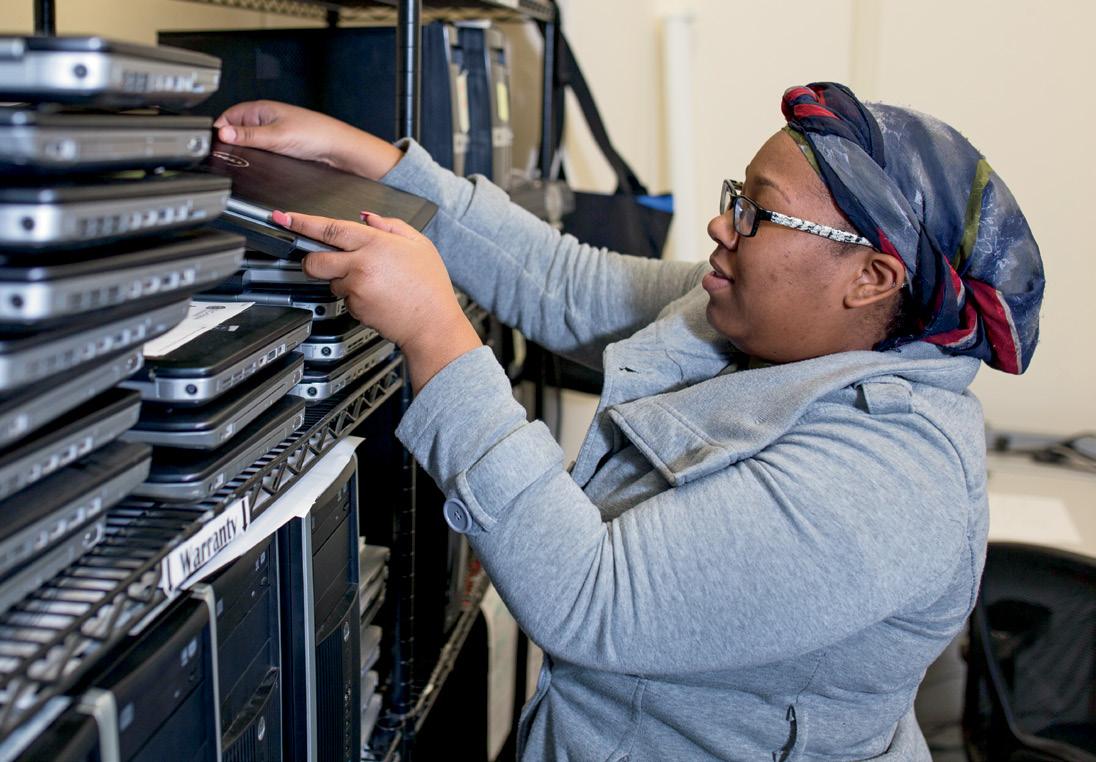
Like faculty, many students required training to adapt to the new virtual-learning environment. To solve this issue, Academic Technology provided narrated tutorial videos and troubleshooting resources to help students use software and log in to their learning modules. They also provided solutions for and anticipated unique needs, such as dual-screen setups for students who required the aid of interpreters, headsets for students and faculty in distracting home environments, and microphones for those who felt more comfortable with a traditional audio setup.
The O’Neill Center for Academic Development also moved its resources online to help students in need and those facing new challenges learning from home. Staff assisted students with online tutoring, disability resources, study skills, and more.
Upon her return to Minnesota, Grose was referred to the O’Neill Center for resources to help her manage dyslexia and distractions at home that triggered her attention deficit hyperactivity disorder (ADHD). “Normally, I’d go to the library where it was quiet and distraction-free, but I couldn’t,” she says. “It made focusing on long online lectures and taking tests really difficult.”
Some students saw surprising benefits from the switch to virtual coursework. While she missed seeing her classmates in person, Pragya Karmacharya ’21 (right), a communication studies major, found a rewarding new schedule. “I’ve been more independent and motivated to claim responsibility for my education,” she says. “And I had the flexibility to work during times my previous schedule hadn’t allowed. For example, I wrote assignments for my writing course when I felt inspired to do so, and I had more time to be creative before I uploaded them to share with the class.”
Grose also appreciated more control over her schedule. “It was a gift to spend more time at home,” she says. “I worked two jobs and an internship while being a full-time student, so not packing up for eight hours on campus reduced my life stress significantly.”
While she’s found the positive side of her experience, Grose still hopes to participate in a graduation ceremony with her class this summer or within the next year. “I got an email in April that I had earned Latin honors, and I was so excited — until I realized there was no ceremony to wear my honors tassel yet,” she says.
For graduating seniors who are grieving this loss, Thomas shared a message of hope. “If you have to find a silver lining in the COVID-19 pandemic, it’s this: women’s leadership has really shone in all of this, and our graduates are ready to move into that leadership role,” she says.
“Just because we don’t have that graduation ritual right now, doesn’t mean you can’t still celebrate what has happened, grieve the end of it, then find that sense of resilience and move forward into your new beginnings. With the equity issues and social disparity that have been highlighted during this pandemic, the work our students have to do as graduates is even more important, and they should remember they are very well trained for that transition.”



